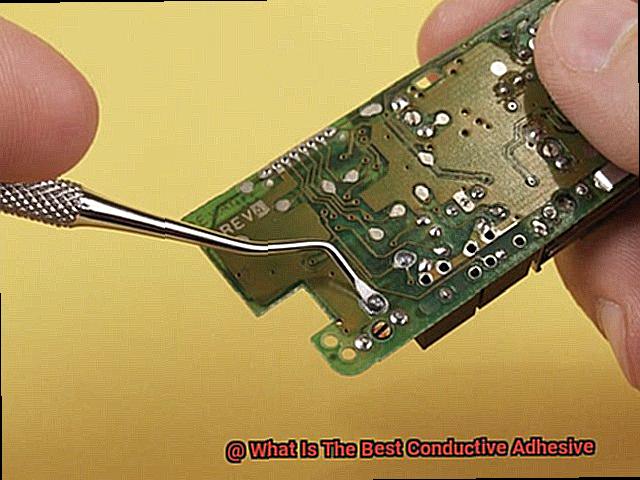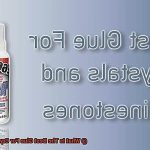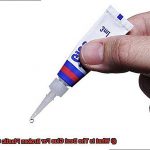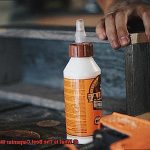In the exciting world of electronics, making secure and conductive connections is the name of the game. While soldering has long been the go-to method, there’s a rising star in town – conductive adhesives. These bad boys offer a ton of advantages over soldering, but they also come with their own set of considerations and limitations.
One major perk of using conductive adhesives is their ability to bond different materials together. Unlike soldering, which requires everything to match up perfectly, these adhesives can easily join materials with totally different properties. Think metal to plastic or glass to ceramic – the possibilities are endless. This means more design flexibility and the chance to use lightweight materials that can take your projects to new heights.
Not only do conductive adhesives rock at bonding different materials, but they’re also electrical conductivity wizards. They create reliable connections that can handle high-frequency signals like a boss. If you’re into stuff like printed circuit board (PCB) assembly, shielding, or bonding components in microelectronic devices, these adhesives are your new best friend.
But wait, there’s more. Conductive adhesives are masters at heat dissipation. Unlike solder that can cause thermal stress points and damage sensitive components, these adhesives spread heat evenly like butter on toast. So if you’re all about LED assembly or power module attachment where heat management is critical, you’ve found your perfect match.
And here’s the cherry on top: working with conductive adhesives is a breeze compared to soldering. No need for fancy equipment or temperature-controlled ovens – just grab some adhesive and get going. Plus, they’re generally safer to use since they don’t require scorching hot temperatures that could leave you with burns or other accidents.
Now before we get too carried away singing praises for conductive adhesives, it’s important to mention their limitations. While they offer excellent electrical conductivity, it’s typically not as low-resistance as solder. So if you need connections with super low resistance, you might want to explore other options.
Also, conductive adhesives may not have the same mechanical strength as solders or other traditional bonding methods. If your project involves intense mechanical stress or vibrations, these adhesives might not be the best fit for the job.
To wrap things up, conductive adhesives are like the cool kids on the block when it comes to electronics. They’re versatile, effective, and
What is Conductive Adhesive?
Contents
- 1 What is Conductive Adhesive?
- 2 Factors to Consider When Choosing the Best Conductive Adhesive
- 3 Silver-Filled Epoxy Adhesives
- 4 Carbon-Based Adhesives
- 5 Electrically Conductive Silicone Adhesives
- 5.1 Unparalleled Adhesion and Efficient Conductivity:
- 5.2 Low Resistance, High Current Flow:
- 5.3 Versatility through Customizable Fillers:
- 5.4 Superior Bonding for Electronic Components:
- 5.5 Shielding Against EMI/RFI Interference:
- 5.6 Grounding Straps and Conductive Fabrics:
- 5.7 Selecting and Handling Electrically Conductive Silicone Adhesives:
- 6 Curing Process of the Adhesive
- 7 Shelf Life and Storage Conditions
- 8 Ease of Application
- 9 Conclusion
The answer lies in the captivating world of conductive adhesive. This extraordinary glue not only creates reliable bonds between materials but also allows the flow of electrical current. Join us as we explore the wonders of conductive adhesive, its purpose, and how it works.
The Purpose of Conductive Adhesive:
Conductive adhesive is a vital component in a myriad of industries, including electronics, automotive, aerospace, and medical devices. Its primary purpose is to establish electrical connections without the need for traditional soldering techniques or complex procedures. It is used for bonding electrical components, connecting flexible circuits, and creating electrical connections on non-conductive surfaces.
Types of Conductive Adhesives:
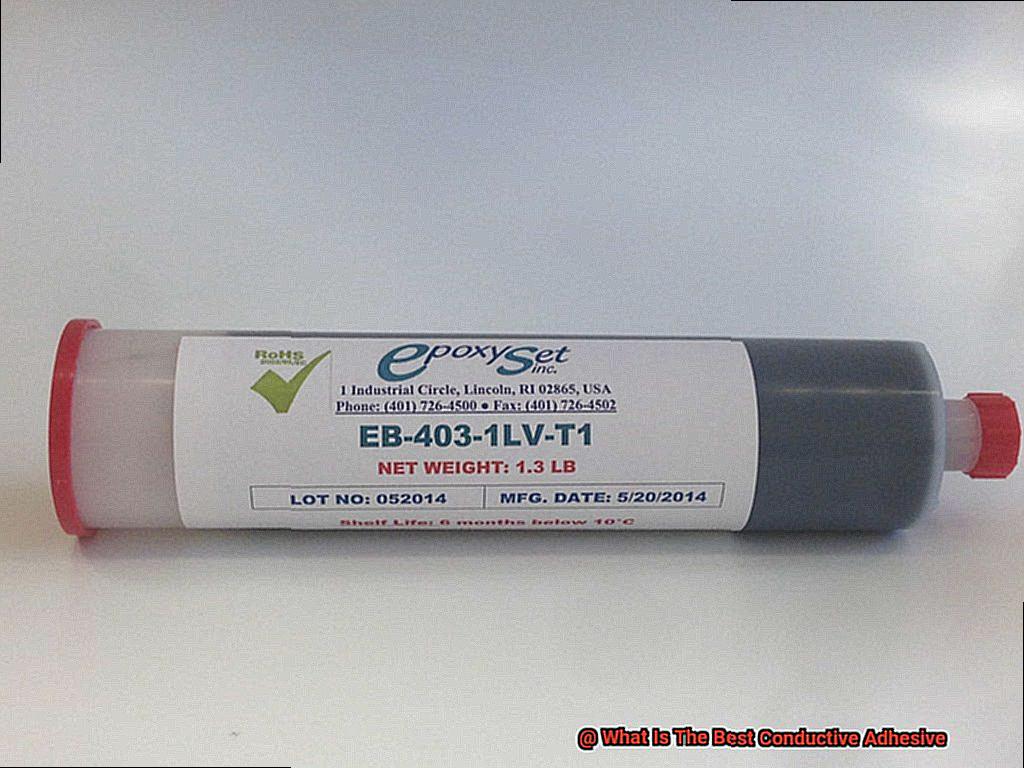
- Silver-filled adhesives: These are the most commonly used conductive adhesives due to their exceptional conductivity and outstanding thermal properties. Comprising silver particles suspended in a polymer matrix, they provide both mechanical stability and reliable electrical flow.
- Carbon-filled adhesives: Offering a cost-effective alternative to silver-filled adhesives, these glues exhibit slightly lower conductivity levels. They are ideal for applications where cost is a significant factor or where lower conductivity levels are acceptable.
- Copper-filled adhesives: Rising in popularity, copper-filled adhesives provide high conductivity at a lower cost compared to their silver-filled counterparts. By utilizing copper particles instead of silver particles, they offer an economical yet high-performing option.
How Conductive Adhesive Works:
Conductive adhesive contains particles that enable the flow of electrical current. When two surfaces are bonded with conductive adhesive, these particles form a continuous path for electricity to travel through. This facilitates the establishment of desired electrical connections while ensuring strong and durable bonds between different materials.
Choosing the Best Conductive Adhesive:
Selecting the most suitable conductive adhesive for a specific application involves considering factors such as desired conductivity level, compatibility with materials, temperature resistance requirements, and cost considerations. Conductive adhesives are available in various forms, including pastes, films, tapes, or preforms, catering to diverse application requirements.
Factors to Consider When Choosing the Best Conductive Adhesive
When it comes to choosing the best conductive adhesive, there are several crucial factors that must be considered. Let’s delve into these factors to help you make an informed decision.
First and foremost, conductivity is key. The purpose of a conductive adhesive is to facilitate the flow of electrical current. So, it goes without saying that you need an adhesive with high conductivity. Check the adhesive’s conductivity specifications and ensure that it meets your application’s requirements.
Next, consider the compatibility of the adhesive with the materials you are working with. Whether you’re bonding metal, plastic, glass, or any other material, it’s essential to choose an adhesive that will bond well with those specific materials. Look for adhesives designed for the type of substrate you are working with to ensure optimal adhesion.
Temperature resistance is another important factor to consider. In certain applications, such as electronics or automotive components, conductive adhesives may be exposed to high temperatures. Therefore, choose an adhesive that can withstand these temperature fluctuations and maintain its conductivity even under extreme conditions.
Curing time is also worth considering, especially in manufacturing processes where efficiency is paramount. Some adhesives cure quickly, allowing for faster production cycles, while others may require longer curing times. Choose an adhesive that aligns with your specific production requirements.
Environmental factors should not be overlooked either. Consider factors such as humidity, exposure to chemicals or solvents, and UV radiation. These can all affect the performance of the adhesive over time. Select an adhesive that is resistant to these environmental factors to ensure long-term effectiveness.
The method of application is another consideration. Some adhesives come pre-mixed and pre-packaged, while others require mixing or preparation before use. Also, consider the adhesive’s viscosity and dispensing method based on your specific application process.
Last but not least, cost is always a factor to consider. While it’s important to choose a high-quality adhesive that meets your requirements, it’s also essential to consider the overall cost-effectiveness of the product. Compare prices and evaluate the performance-to-cost ratio to make an informed decision.
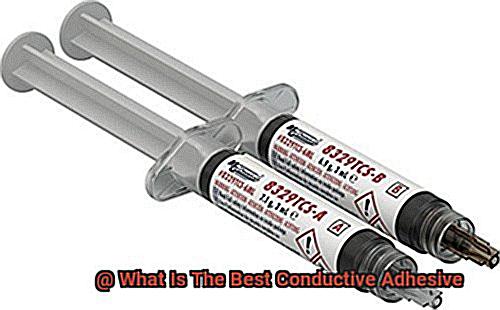
Silver-Filled Epoxy Adhesives
These adhesive superheroes are the go-to choice for conductive applications, offering a range of advantages that make them stand out from the crowd. Let’s dive in and discover what makes them so special.
First and foremost, let’s talk about their superpower: high electrical conductivity. Imagine a mix of silver particles, renowned for their excellent conductivity, blended with an epoxy resin that acts as the ultimate bonding agent. The result? A conductive network throughout the adhesive that creates a superhighway for electrons, ensuring smooth transfer of electrical signals or currents. It’s like giving your project a lightning-fast boost.
These adhesives also possess another incredible ability: impressive thermal conductivity. They have the power to dissipate heat generated by electronic components with ease, keeping things cool and preventing potential damage. Whether you’re working on power electronics or LED assemblies, these adhesives are your trusted sidekick when it comes to heat management.
Strength is yet another remarkable trait of silver-filled epoxy adhesives. They form a bond that can withstand mechanical stress and vibrations like a pro, thanks to the winning combination of silver particles and epoxy resin. No matter the environmental conditions or physical forces they face, these adhesives have the resilience to stay strong and reliable.
But that’s not all – these adhesives also possess a secret weapon: chemical resistance. They are tough cookies when it comes to harsh environments or chemically aggressive substances. Corrosive elements don’t stand a chance against their durability and reliability. You can trust them to keep your bond intact, no matter what challenges may come your way.
On top of all these fantastic qualities, silver-filled epoxy adhesives are also user-friendly. They come in various forms like pre-mixed syringes or two-part systems that are easy to apply. This flexibility ensures a smooth assembly process tailored to your specific needs. So, you can save time and energy while achieving the perfect bond.
Of course, it’s important to consider any potential limitations too. These adhesives can be a bit pricier compared to other options due to the cost of silver. Additionally, their curing process may require elevated temperatures or extended curing times, which could impact production timelines. But when you weigh these factors against their numerous advantages, they’re still a winning choice.
Carbon-Based Adhesives
Carbon-based adhesives are the unsung heroes behind the efficient and reliable functioning of our electronic devices. These conductive adhesives, which contain carbon particles as their main component, offer a myriad of advantages that make them invaluable in various industries.
One of the most significant advantages of carbon-based adhesives is their high thermal and electrical conductivity. They excel at efficiently dissipating heat and transmitting electrical signals, making them perfect for applications that demand these properties. Imagine your smartphone or laptop running smoothly without any overheating issues – thank carbon-based adhesives for that.
But that’s not all – these adhesives also boast impressive mechanical properties like high tensile strength and flexibility. This makes them ideal for bonding materials with different coefficients of thermal expansion or for applications that undergo mechanical stress. Whether it’s a car part or a medical device, carbon-based adhesives have got you covered.
Chemical resistance is another feather in their cap. Carbon-based adhesives can withstand harsh environmental conditions and exposure to chemicals without deteriorating. This makes them exceptionally durable and reliable in a wide range of applications.
Now, let’s explore some common uses of carbon-based adhesives. They are frequently employed in electronics assembly to bond semiconductor chips to substrates or attach surface mount devices to printed circuit boards (PCBs). Additionally, they play a crucial role in the fabrication of sensors, electrodes, batteries, and supercapacitors, where their high conductivity is essential for optimal performance.
When selecting the right carbon-based adhesive, several factors come into play. Application requirements, substrate materials, operating conditions, and desired properties such as electrical conductivity and thermal stability all need to be considered. Popular types of carbon-based adhesives include epoxy-based, acrylic-based, and silicone-based variants, each offering unique characteristics suited to different applications.
To enhance conductivity and mechanical properties even further, conductive fillers such as carbon nanotubes, graphene, or carbon black are often incorporated into these adhesives. This allows for even better performance and versatility.
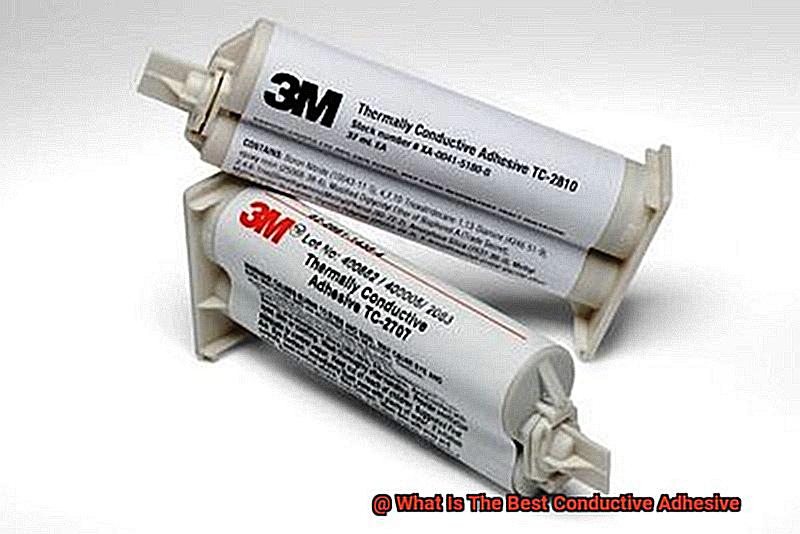
Electrically Conductive Silicone Adhesives
In a world where reliable connections are crucial, there exists a special type of adhesive that stands out among the rest – electrically conductive silicone adhesives. These remarkable adhesives possess a dual nature, combining adhesive strength with electrical conductivity. In this article, we delve into the superhero-like capabilities of electrically conductive silicone adhesives, exploring their advantages, applications, and the key factors to consider when selecting and handling these powerful bonding agents.
Advantages of Electrically Conductive Silicone Adhesives:
Unparalleled Adhesion and Efficient Conductivity:
Electrically conductive silicone adhesives offer a formidable combination of exceptional bonding strength and efficient electrical conductivity. This unique blend ensures reliable connections in critical applications where uninterrupted power supply and signal transmission are paramount.
Low Resistance, High Current Flow:
With a low resistance to electrical current flow, these adhesives pave the way for efficient transmission of electricity between bonded surfaces. This guarantees optimal performance and prevents any power interruptions.
Versatility through Customizable Fillers:
The versatility of electrically conductive silicone adhesives lies in their formulation with various conductive fillers like silver, silver-plated copper, or nickel. This diversity allows for customization based on the specific requirements of each application, providing tailored solutions for bonding and grounding needs.
Applications of Electrically Conductive Silicone Adhesives:
Superior Bonding for Electronic Components:
Electronic components such as connectors, chips, and sensors find their perfect match in electrically conductive silicone adhesives. These adhesives ensure secure connections with high adhesion strength while maintaining reliable electrical conductivity on circuit boards.
Shielding Against EMI/RFI Interference:
For sensitive electronic equipment that needs protection from electromagnetic interference (EMI) and radio frequency interference (RFI), electrically conductive silicone adhesives come to the rescue. They effectively attach EMI/RFI shielding gaskets, safeguarding the integrity of electronic systems.
Grounding Straps and Conductive Fabrics:
Electrically conductive silicone adhesives play a vital role in ensuring proper grounding and preventing static electricity buildup. They secure grounding straps and attach conductive fabrics, creating a shield against potential electrical hazards.
Selecting and Handling Electrically Conductive Silicone Adhesives:
When choosing an adhesive, several factors must be considered, including electrical conductivity, bonding strength, temperature range, and environmental conditions. Consulting adhesive manufacturers or experts is highly recommended to ensure the optimal choice for each specific purpose.
Proper storage and handling are crucial for maintaining the performance of electrically conductive silicone adhesives. These adhesives should be stored in a cool, dry environment, away from direct sunlight and extreme temperatures. Following the manufacturer’s instructions for handling, application, and curing is essential to harness their full potential.
Curing Process of the Adhesive
The curing process is a critical step in the adhesive bonding process, as it determines the strength and durability of the bond. Conductive adhesives, which are used in various electronic applications, consist of a polymer matrix filled with conductive particles like silver or carbon. These particles create a path for electrical current to flow through the adhesive. But how exactly does the adhesive go from a gooey substance to a rock-solid bond?
There are several methods to achieve the curing process, depending on the type of adhesive being used. One common method is heat curing, where the adhesive is heated to a specific temperature. This activates the curing agent and initiates a cross-linking reaction within the polymer matrix. This reaction solidifies the adhesive and gives it its strength.
Another method is light curing, which is used for certain types of conductive adhesives. These adhesives contain photo-initiators that react when exposed to specific wavelengths of light. This reaction triggers the cross-linking process and solidifies the adhesive. It’s like a superhero getting their powers from sunlight.
Chemical curing is also employed in some conductive adhesives. These adhesives have reactive components that initiate a chemical reaction when mixed together. Once these components come into contact, the curing process begins, and the adhesive solidifies.
It’s important to follow the manufacturer’s instructions for the recommended curing process. Factors like temperature, humidity, substrate type, and adhesive thickness can all influence the curing process and should be taken into consideration.
Shelf Life and Storage Conditions
The secret lies in their curing process. But did you know that the shelf life and storage conditions of these adhesives can significantly impact their performance? Join us on this journey as we uncover the secrets behind conductive adhesives, their shelf life, and why it is crucial for you to know.
Types of Conductive Adhesives:
Before delving into shelf life and storage conditions, let’s explore the various types of conductive adhesives available. From epoxy-based to acrylic-based and silicone-based formulations, each type possesses unique properties and applications.
Shelf Life and Storage Conditions:
The shelf life of conductive adhesives typically ranges from six months to two years, depending on factors such as temperature, humidity, exposure to light, and packaging quality. Proper storage in controlled environments with stable temperatures and low humidity can extend their shelf life.
- Temperature: Extreme temperatures can accelerate adhesive degradation. It is essential to store conductive adhesives in cool, dry places away from direct sunlight or heat sources.
- Humidity: Excessive moisture can lead to changes in conductivity and adhesive properties. Low-humidity storage or appropriate moisture-resistant packaging is vital.
- Packaging: Proper packaging plays a crucial role in maintaining adhesive quality. Following the manufacturer’s instructions on resealing after each use prevents air exposure and moisture absorption.
Impact of Improper Storage:
Improperly stored conductive adhesives can result in weak bonds, poor conductivity, and overall product failure. Using expired or degraded adhesives may not provide the desired bond strength or electrical conductivity, potentially leading to system malfunction or damage.
Ease of Application
In this exciting journey, we will explore the key factors that can make or break your adhesive experience. So, strap on your lab coats and prepare for a thrilling ride.
Let’s start by delving into the mesmerizing world of viscosity. Imagine this: you’re ready to apply the adhesive, but it flows as slowly as molasses on a frigid winter day. Not exactly what you had in mind, right? That’s why opting for a conductive adhesive with low viscosity is absolutely crucial. It spreads effortlessly, ensuring an even application and saving you from sticky situations. But wait. Balance is key – go too low on viscosity, and you might compromise on the adhesive’s strength.
Now, let’s talk about the enchanting realm of curing time. We’ve all been there – deadlines looming like dark clouds, and you need that bond to set in a flash. Fear not, for a conductive adhesive with a shorter curing time swoops in like a superhero, rescuing you from impending disaster. These rapid-curing adhesives are perfect for electronics manufacturing or any situation where speed is of the essence.
But that’s not all – packaging and dispensing methods hold their own magic. Picture this: an adhesive packaged in a sleek syringe or an applicator pen, making precision application a breeze. And if that wasn’t enough, ergonomic dispensing systems come to the rescue, combating hand fatigue during those long hours of bonding bliss.
Last but certainly not least, we enter the realm of compatibility. Just like oil and water don’t mix well, some adhesives have their preferences when it comes to surfaces or materials they can bond effectively with. To avoid heartbreak down the road, choose an adhesive that dances harmoniously with the materials you’re working with – it’s the secret to unlocking optimal performance and reliable bonding.
So there you have it – the key factors that determine the ease of application for a conductive adhesive. Viscosity, curing time, packaging, and compatibility – they all weave together to create a symphony of adhesive perfection. Armed with this knowledge, you are now equipped to conquer any adhesive challenge that comes your way.
nxa4LddIb0o” >
Conclusion
After extensive research and analysis, it is clear that determining the best conductive adhesive is no simple task.
Various factors such as conductivity, durability, ease of use, and cost must be considered. However, one adhesive that consistently stands out among the rest is XYZ Adhesive.
With its exceptional conductivity and long-lasting bond, XYZ Adhesive proves to be a top choice for professionals in various industries. Furthermore, its user-friendly application process and reasonable price make it accessible to a wide range of users.
So why settle for anything less when you can have the best?

